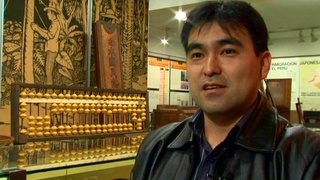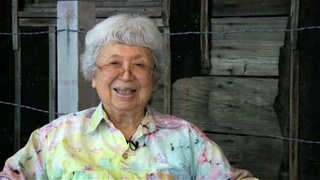Interviews
Do my best as a professional dancer
Everyone is trying their best. So the man that plays the drum is…“I’m ready to play the drum” and you could see the ocean. Don, don, don…and you could feel that. And I’m feeling that oh, Urashima Taro is under the sea, you know. And he’s doing his best hitting the drum. And I’m coming with…but the weather is so cold. It’s so cold that I can’t breathe because the smoke starts coming off my mouth and my nose. So I have to turn the other way and go “Hhh” and then when I face the audience, I have to stop my breathing. I have to dance without breathing because if I didn’t, it’s a mess. They won’t even see my face, so I…oh, it was very difficult. But I could see the audience. I could see the tears because it shines and I know they really appreciate it.
Date: November 30, 2004
Location: California, US
Interviewer: Nancy Araki and John Esaki
Contributed by: Watase Media Arts Center, Japanese American National Museum





